
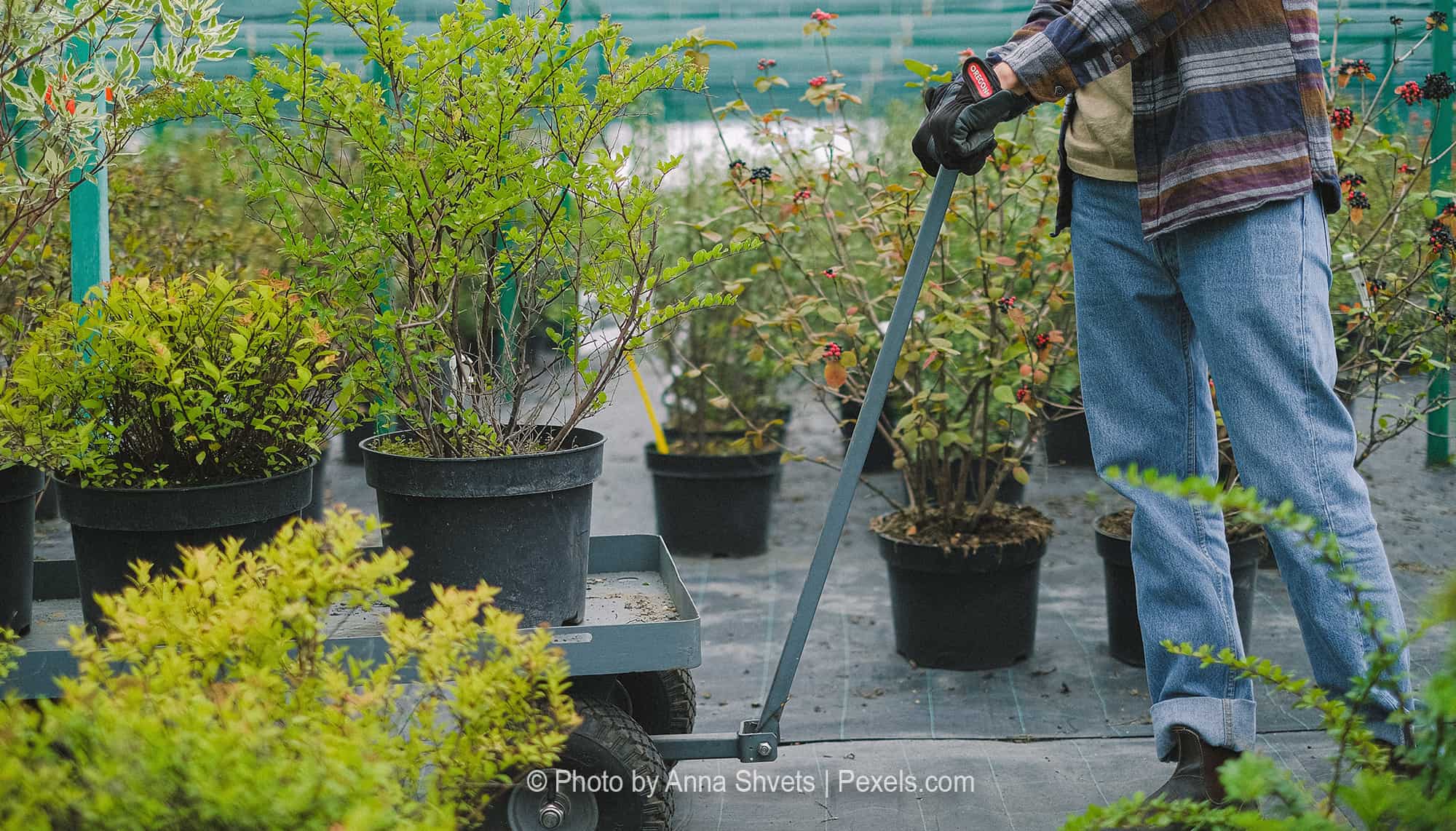
Get Your Body Ready to Tackle the Gardening Chores Ahead
“The secret to a healthy garden is a healthy gardener.”
– Canadian Physiotherapy Association
By: Kathy Wolfe, Skagit County WSU Extension Master Gardener
Let the gardening begin! As March arrives, our gardening instincts kick into gear and we feel the urge to get started. We look forward to preparing our gardening beds, applying compost to the soil, plunging our first pea seeds into the ground, getting a head start on slug control, planting asparagus crowns (thankful that you dug those trenches last fall), and starting seeds in a greenhouse or under grow lights. Another activity to add to your to-do list is to get your body ready to tackle the gardening chores for the year ahead.
If you routinely work out at the gym, are a yoga devotee, or were lucky enough to spend your winter in a warm climate where you remained active for months, good for you! Many of us, however, have been hibernating along with our plants and should consider how we will prepare our bodies for the shoveling, lifting, hoeing, and raking activities soon upon us. It takes time to build strength, stamina, and aerobic power to prevent injury.
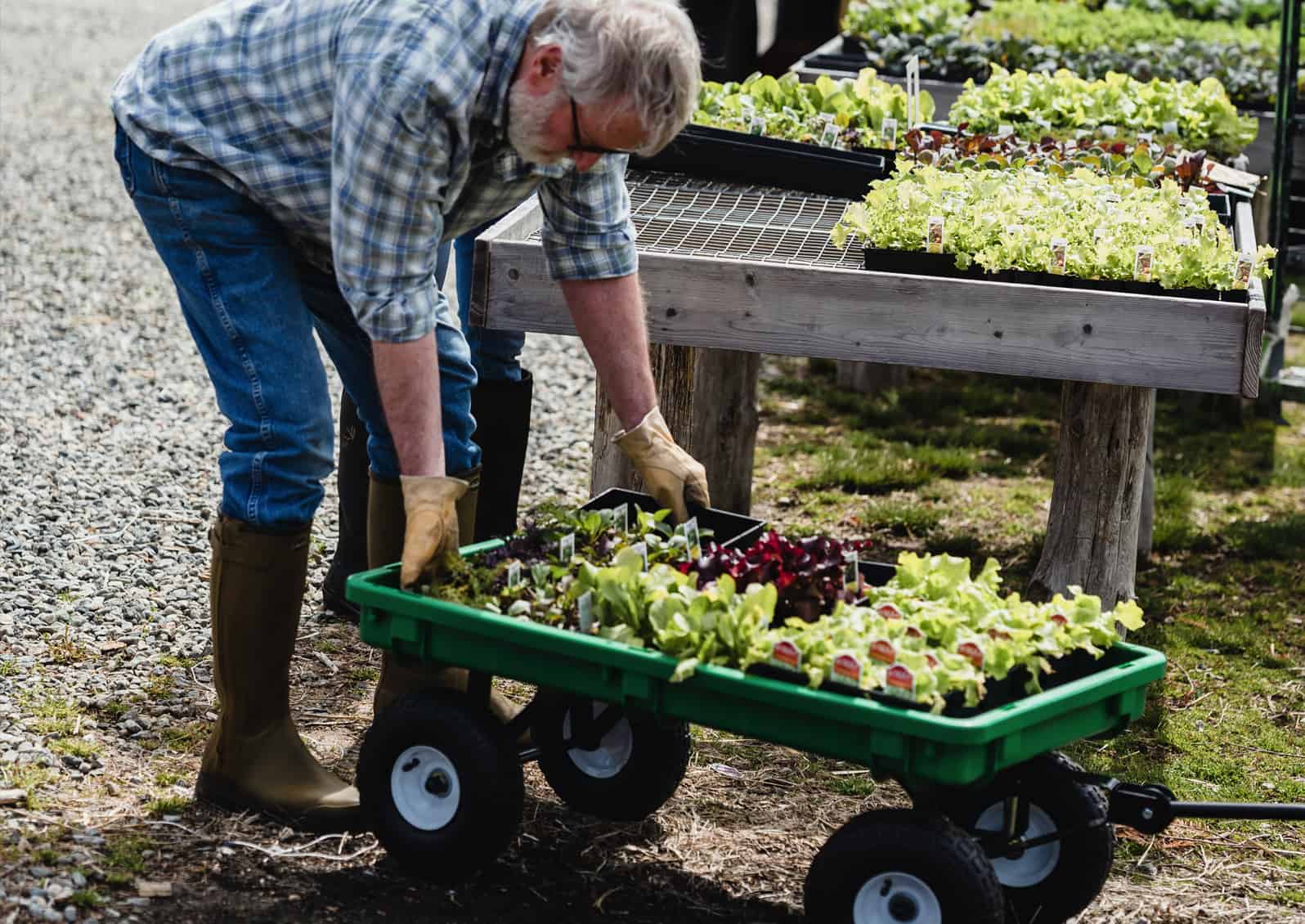
When moving something, keep your back straight and avoid arching it. Use your leg and buttock muscles instead of your arms. © Photographer: Yan Krukau | Pexels.com
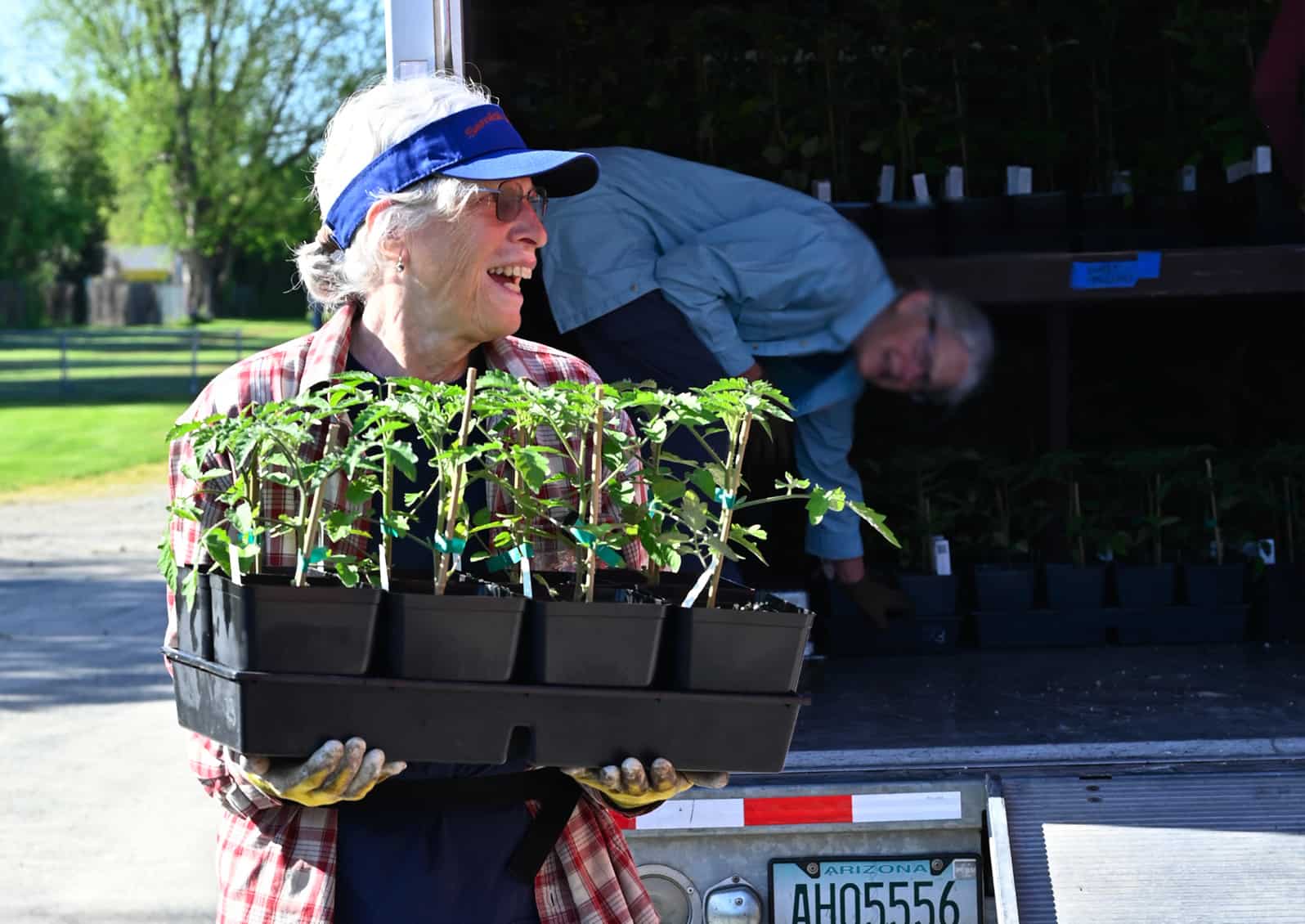
Early season muscle strengthening helps the body endure the rigors of lifting and moving which are an inevitable part of a gardener’s routine. © Photographer: Kay Torrance
Why bother, you ask? If your core strength is low, your balance will be affected, and falls could result. Big and small muscles must be strong and pliable to avoid tears, cramps, and sprains. No one wants that.
Before our gardening marathon, let’s begin by practicing easy, at-home exercises. By starting today, your body will be more prepared for the heavier gardening chores still to come. Be sure to check with your medical professional before starting any new physical regimen. The tips presented here are in no way intended as a substitute for medical consultation.
Get Out and Walk
Boost your heart health and stamina with a brisk walk to get the blood circulating into your large muscle groups. Twenty to thirty minutes, done three times per week, is advised for cardiovascular health.
Chair Squats
Stand in front of a chair, feet shoulder-width apart, arms in front of you. Bend your knees, slowly squat, and gently sit down, then stand up using only your legs. Repeat several times. This exercise will benefit your quadriceps, glutes, and hamstrings, helping your functional strength.
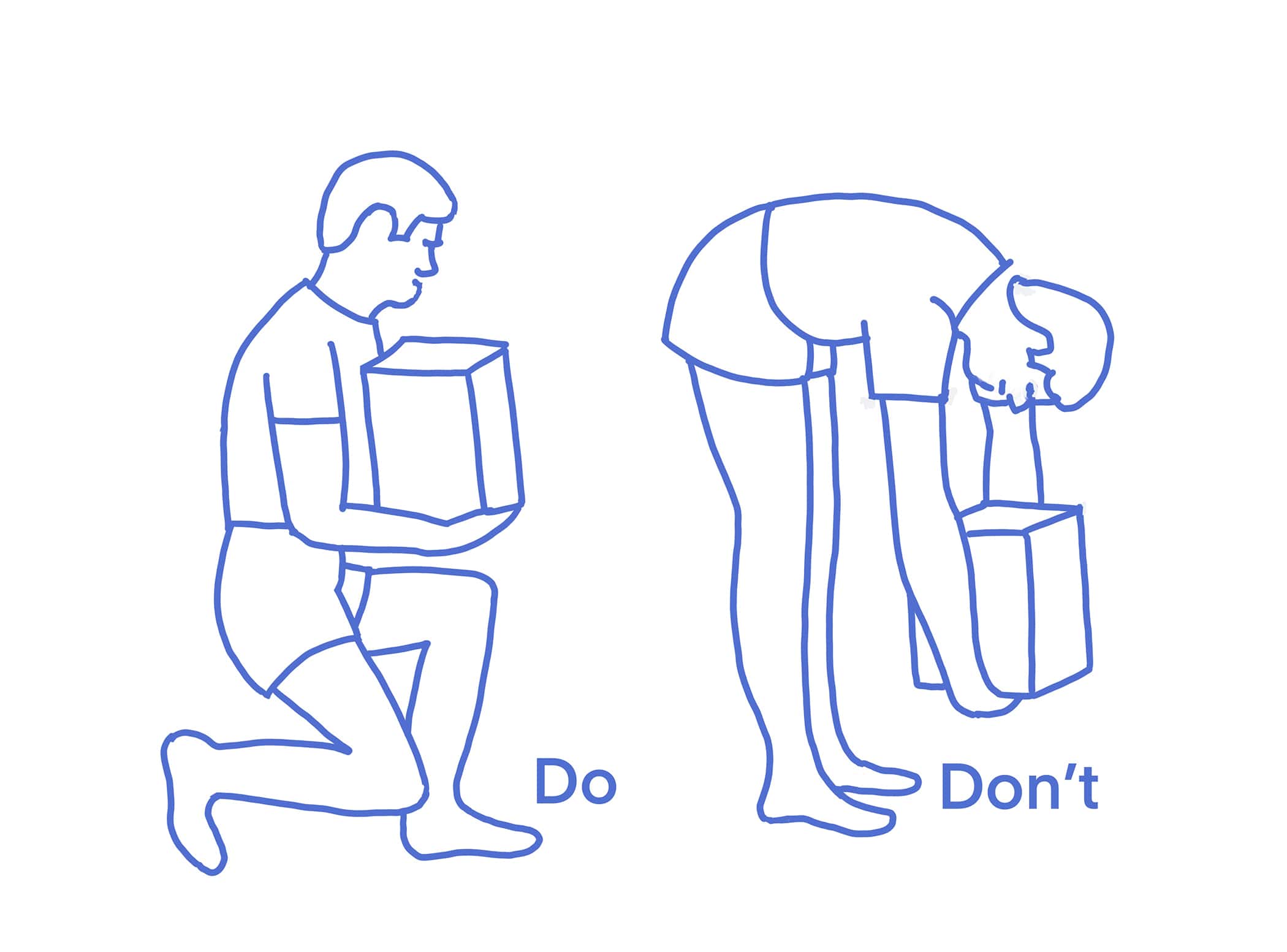
Proper lifting techniques protect the back.
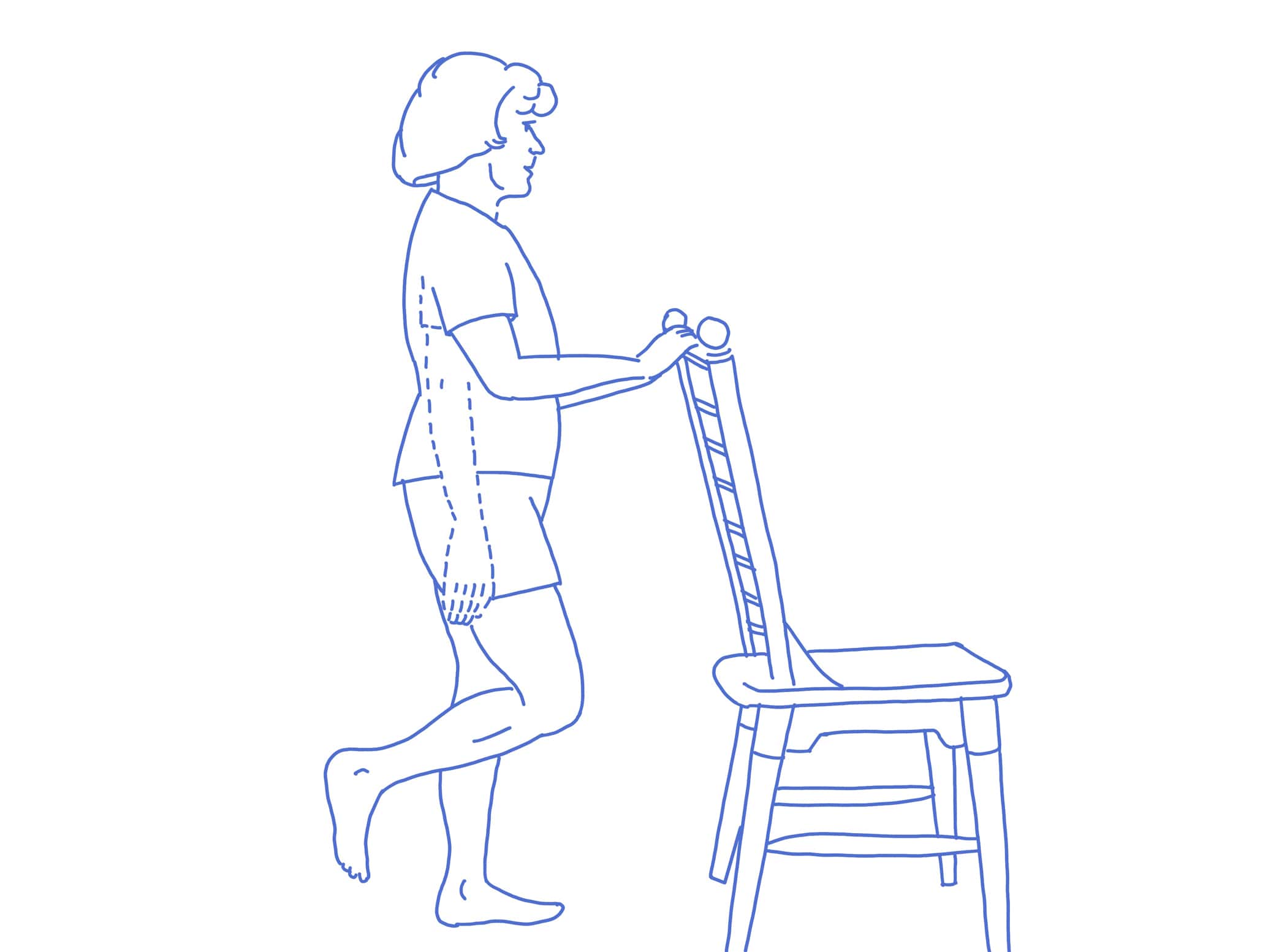
Exercises using a chair for balance are a great way to tune-up the body core muscles for functional strength.
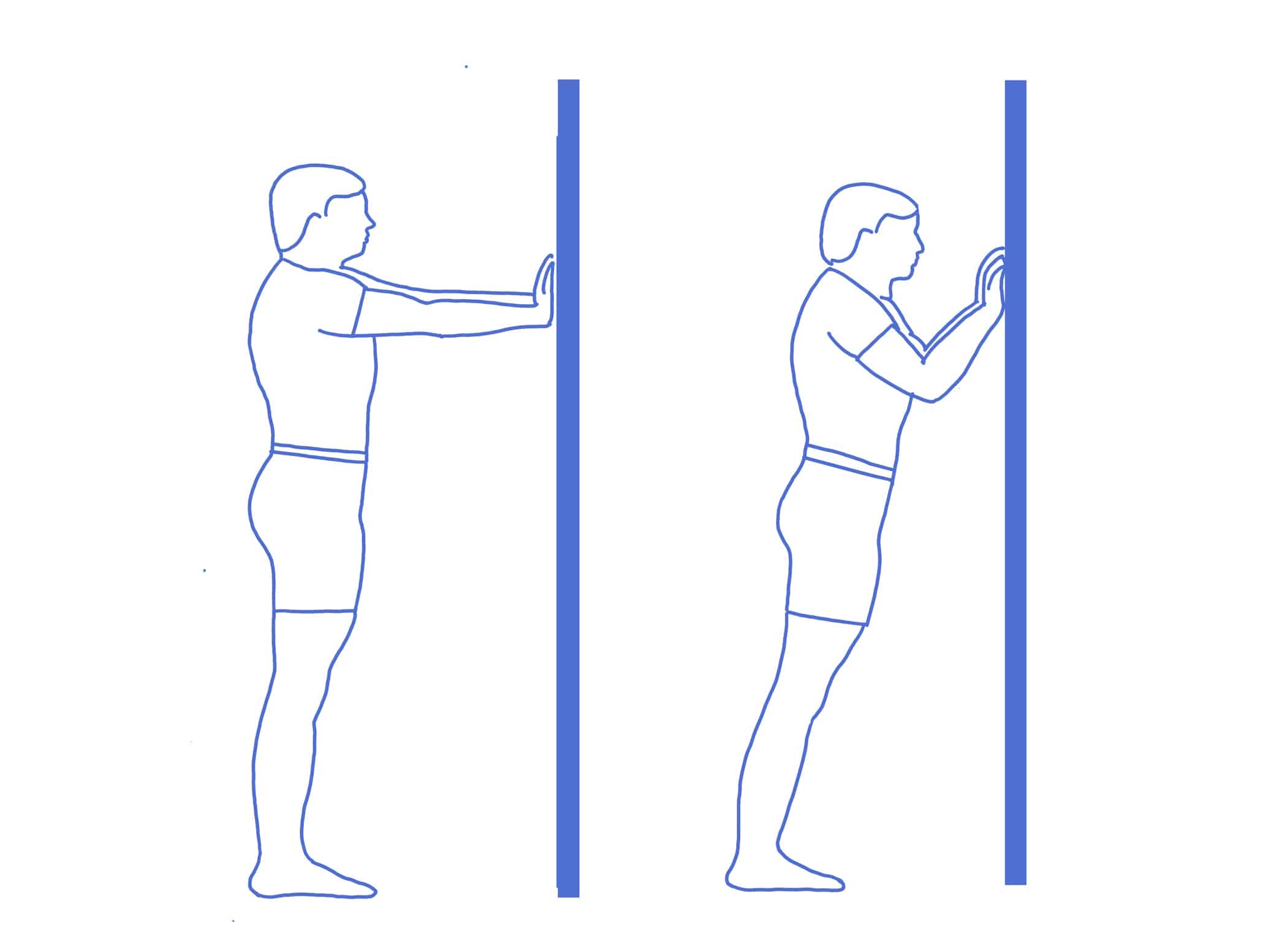
Wall pushups help strengthen your chest, shoulders, triceps, abs, and wrists.
Wall Pushups
Stand facing a wall with your hands shoulder-width apart. With your arms straight, place your palms on the wall. Keep your back straight, bend your elbows into a pushup position, and then push yourself away from the wall while keeping your palms in contact with the surface. This exercise strengthens your chest, shoulders, triceps, abs, and wrists.
Balance
Try standing on one leg and using fingertip touch on a countertop or chair. Repeat with the opposite leg. You can do this while performing everyday tasks like washing dishes or brushing your teeth. Try walking heel-to-toe. Practice leaning down and standing up, holding onto a chair if necessary. You will be doing a lot of this in the garden.
Now that your body is becoming more toned, balanced, and flexible, it is important to carry it gently into each gardening day. Start with some basic stretches. Remember, for any stretches, it is important to warm up with a few minutes of physical activity like walking, stretch at least two or three times alternating side to side, keep good form and posture (standing tall with your shoulders back and relaxed, hips even and core engaged to support your back), and keep breathing throughout each stretch. You might feel a pulling sensation or slight discomfort, but you should not feel pain with any stretch. And never bounce while stretching, but hold the movement steady. Print out these basic stretches and post them as a reminder and an easy reference.
Begin with some basic roll-downs for back flexibility and balance practice.
Further, prepare your back and spine with several thoracic rotations on each side, bending and twisting the spine to increase flexibility.
Warm up your pectorals (chest muscles) using a doorframe or corner to create resistance.
Don’t forget your wrists. Do a few wrist flexor and extensor exercises to get you started.
Do gentle quadriceps, gluteal, hip flexors, and calf stretches to prepare your legs for action.
Now that you are warmed up start with a gentle activity such as raking to help get the blood flowing through your large muscle groups.
Different tasks require specific attention and care. For example, the proper weeding technique is to dig around all sides of the weed to loosen it up before attempting to yank it out. Use your tools to do the work for you whenever you can. And alternate your weeding stance between standing and squatting. If you kneel, use a kneeling pad or individually pad your knees to protect them from excessive pressure.
Good tips for lifting and moving heavy items include planning where you will move the object and removing obstacles before lifting anything. Place the item close to your torso and bend your knees. Take a deep breath to prepare yourself and initiate the lift on the exhale. Use your leg and buttock muscles instead of your arms. Keep your back straight and avoid arching it. Limit the rotation of your spine because this will put undue stress on your lower vertebrae. Use your feet if turning is necessary. Refrain from jerking a heavy load, or you might be visiting a physical therapist the next morning.
Alternate gardening tasks and positions throughout the day and keep well hydrated.
After a day of gardening, take a few minutes to cool down by doing some of the warmup stretches shown. Take a short walk to keep your large muscle groups moving freely. A walking inspection of the rest of your yard may be in order. This practice will help prevent those nasty back and leg aches later in the day.
Doing some strengthening work before the gardening season, starting each garden day with some stretches and light work, and ending your session with a nice cool down will become habits if you repeat them regularly. Your body will thank you for it!
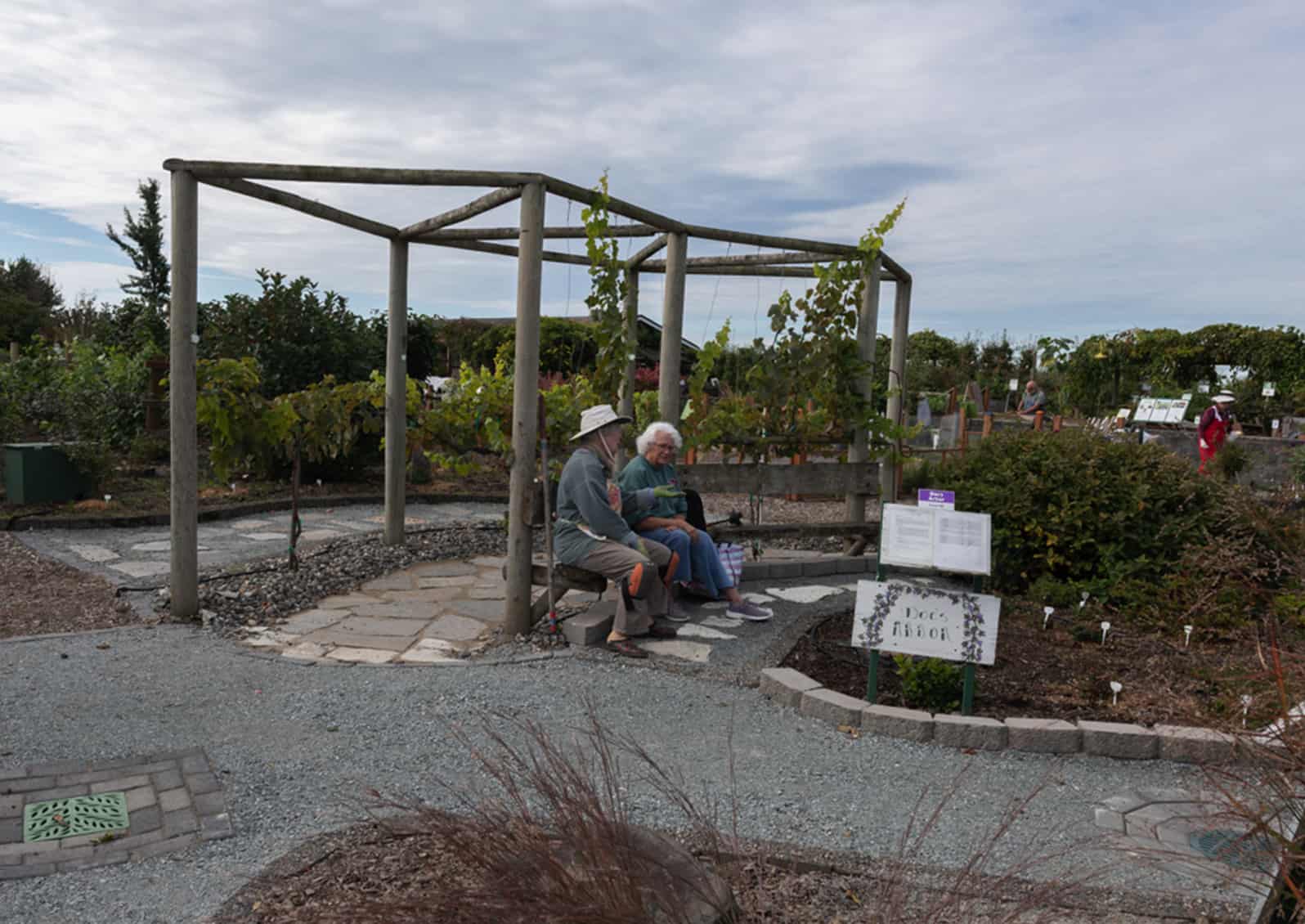
Taking time to rest and rehydrate is important throughout the gardening season. © Photographer: Nancy Crowell
REFERENCES AND RESOURCES:
Fuller, J. Stretches for Gardeners: 8 best stretches to keep you pruning for longer. Retrieved from: https://sportandspinalphysio.com.au/improve-your-gardening-8-best-stretches
Crawford, C. Inspire to Move – Gardening to Exercise Wellness Connections, University of Illinois System, April 2021. InspireToMoveApril2021.pdf (uillinois.edu)
Moeller, S. 6 Ways to Get Gardening Muscles in Shape and Prevent Injuries. AARP Home & Family, March 15, 2021. Retrieved from: 6 Ways to Get Gardening Muscles in Shape and Prevent Injuries – Rehab Management (rehabpub.com)
Zellers, C. Gardening for Physical Activity. Cooperative Extension of Cape May County, Rutgers, New Jersey, May 15, 2020. Retrieved from: Gardening for Physical Activity – Rutgers Cooperative Extension of Cape May County
30-minute Home Stretching Program. Choose PT Health Tips. Retrieved from: Health Tips | 30-Minute Home Stretching Program | Choose PT
How to Prepare for Gardening as a Senior. Health and Wellness, April 27, 2021. Bethesda Health Group, St. Louis, MO. Retrieved from: How to Prepare for Gardening as a Senior – Bethesda Health Group

Kathy Wolfe
ABOUT THE AUTHOR :
Kathy Wolfe has been a Skagit County WSU Extension Master Gardener since 2002. She is co-manager of the vegetable garden at the Discovery Garden on SR 536 west of Mount Vernon.
Questions about home gardening or becoming a Master Gardener may be directed to: Skagit County WSU Extension Office, 11768 Westar Lane, Suite A, Burlington, WA 98233; by phone: 360-428-4270; or via the website: www.skagit.wsu.edu/mg